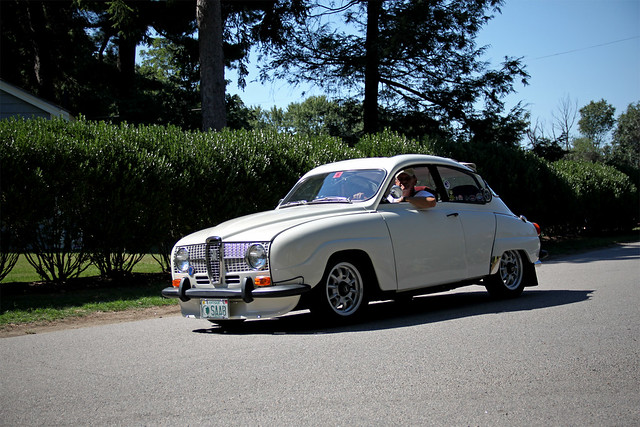Quote:
Originally Posted by JohnAh

Don´t worry Sven7, my -64 have floor like the car of Fred Flintstone and every part that is involved in keeping the wheels attached are totaly rotten. Your nickname sounds swedish and if that´s where you come from I guess you know that there are already plenty of well-kept and nicely restored 64´s here. Nobody at the swedish Saab-club web forum seems to feel bad about the comming slaughter. Younger Saab 96 with V4-engine have been converted to "short-noses" (before 1965) before so I don´t feel bad for destroying these nice vintage cars. Now my only problem is time...
|
My real name's Tyler but I am 25% Danish and 25% Swedish.

It's too bad to hear about a car in such bad condition but I'm glad you will be giving it the love it needs.
By front air dam I mean this- it's similar to a splitter:
 Saab 96
Saab 96 by
Kompressed, on Flickr
Even if the underside of your car is not smooth, it will push air to the side, "splitting" it. Usually race cars have a more aggressive version with the horizontal piece you mentioned. We ecomodders are not so interested in downforce, though, so we usually go for the land speed racer look.

On this 93 you can see the spoiler that pushes air to the sides. Smooth wheel covers help that air move by without too much trouble. If you can make UrSaab style wheel skirts you'll have a good start. The photo below is undergoing a tuft test, which I recommend you trying.

While the tufts may show attached flow, this flow may be harmful vortexes due to the sloping rear end. If you make the profile of the car follow this streamlining template and observe the 20 degree rule (15 is a bit "safer"), you should reduce those vortexes pretty well.

Line up the ground line and roof apex... voila!

You want to fill in the blue area up to about the 90% mark. Past that, you see almost no additional benefits. Of course, follow a similar curvature in plan view and try to avoid sharp corners as they are bad in side winds.
Hope that helps!
PS- feel free to post some photos. We'd all love to see what you're working with.
